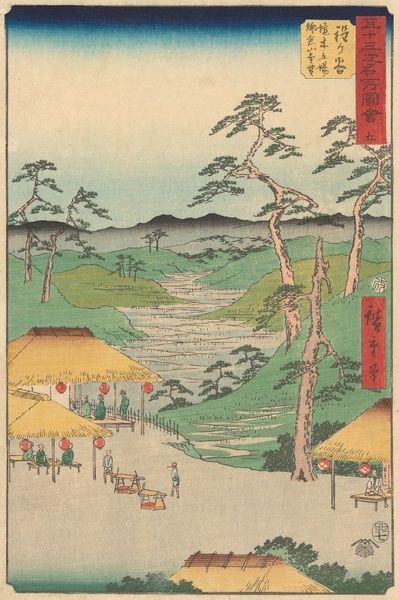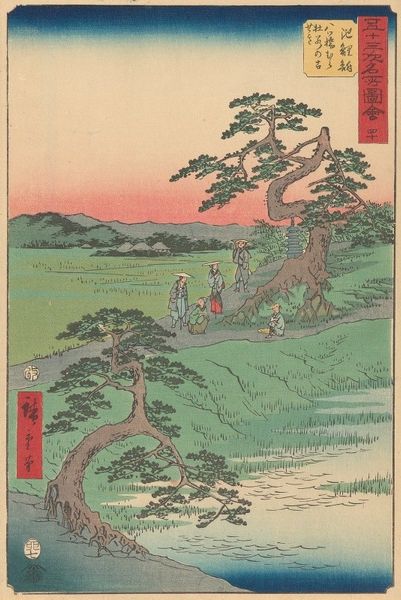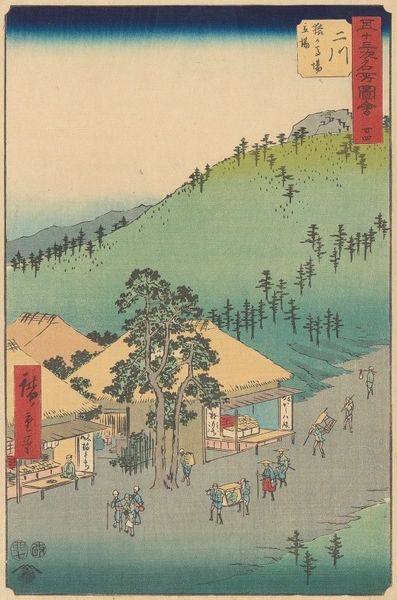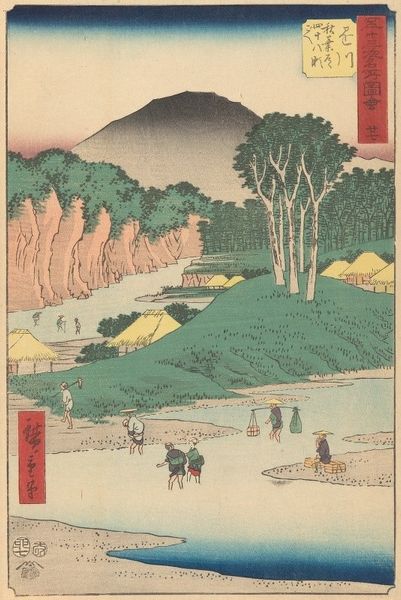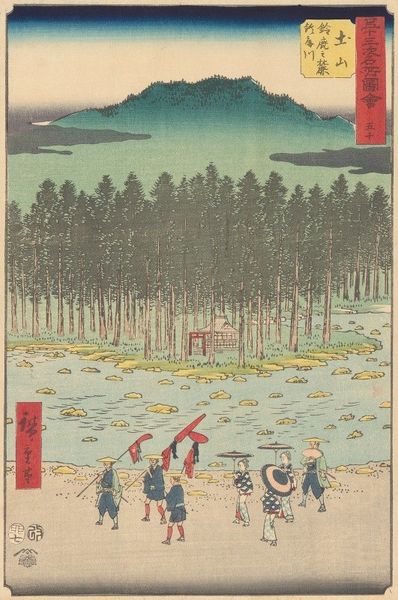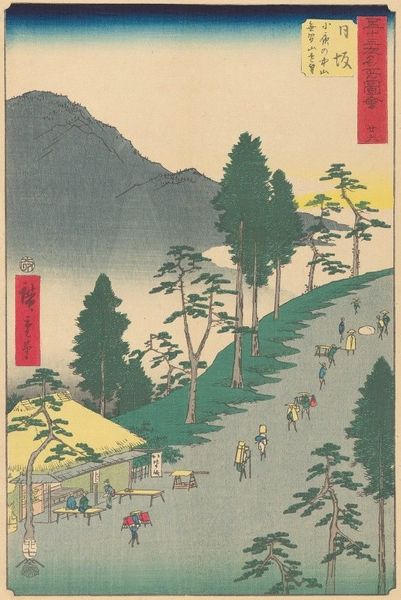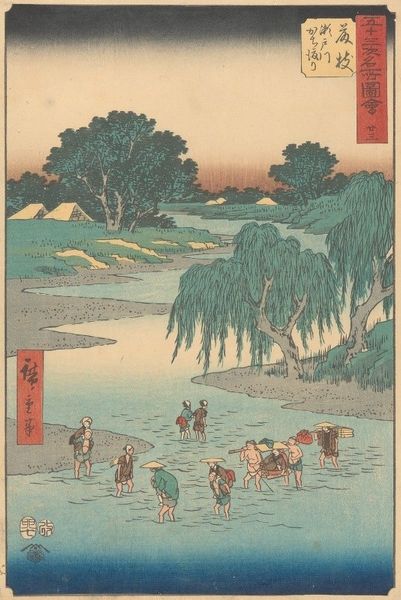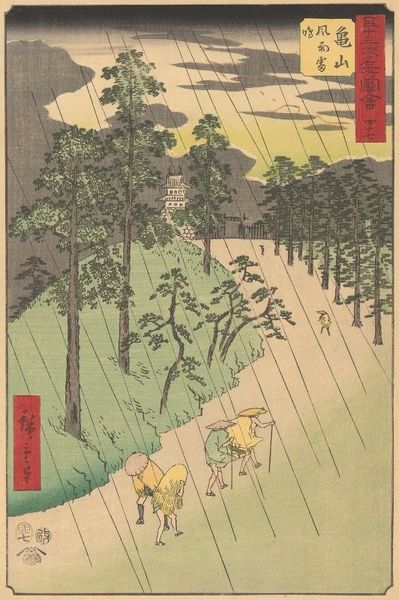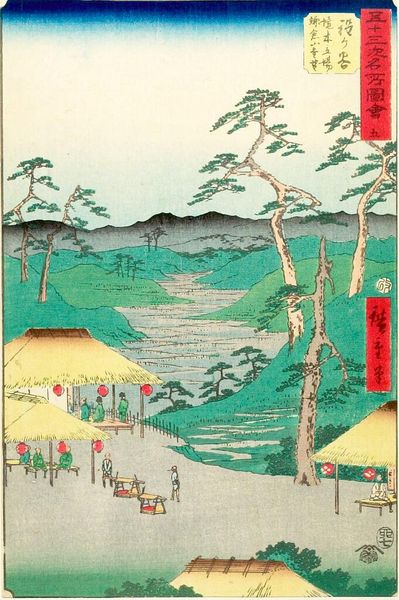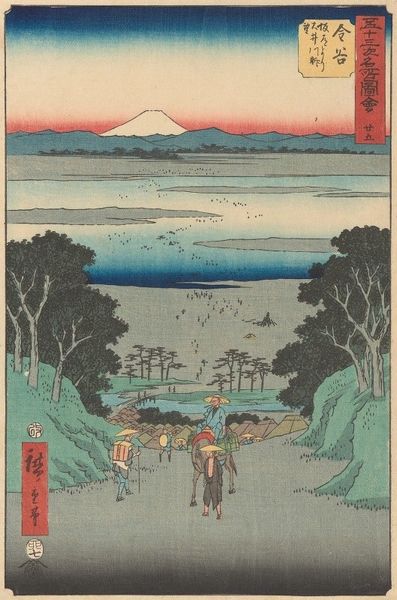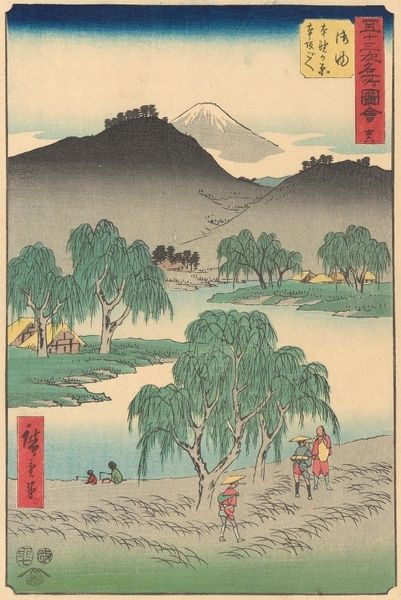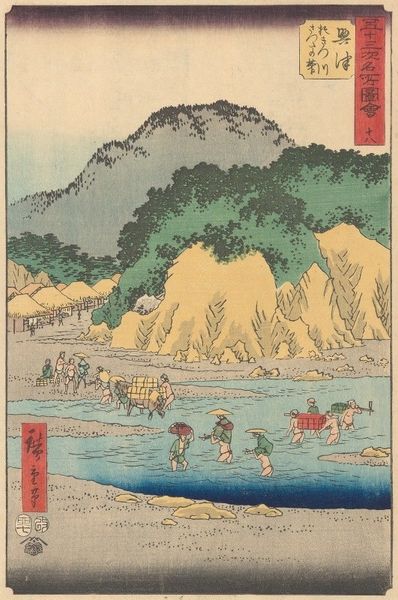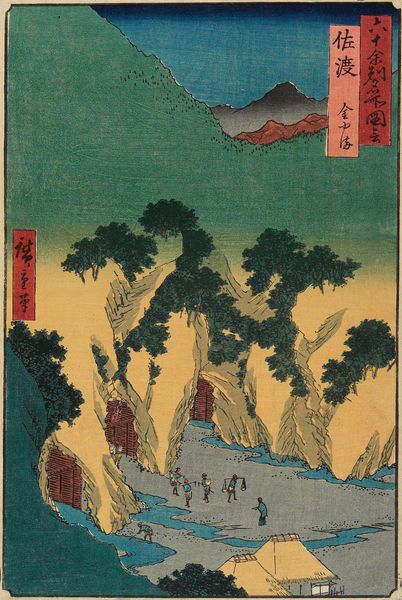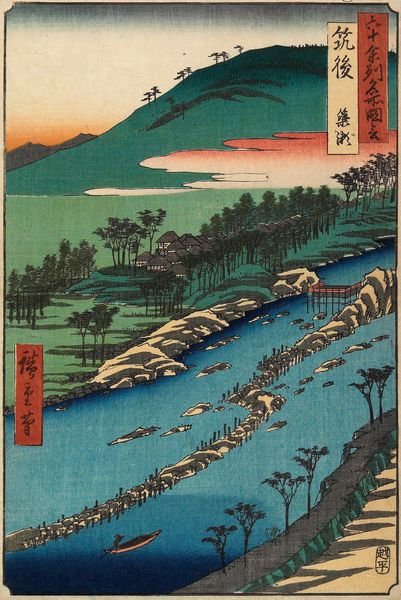
Copyright: Public Domain: Artvee
Editor: This is "Totsuka" by Utagawa Hiroshige, made in 1855. It’s a woodblock print, and I'm really drawn to the contrast between the vast landscape and the tiny figures dotted throughout. It feels like a commentary on humanity's place in nature. What stands out to you? Curator: Immediately, I’m struck by the way Hiroshige uses established pictorial elements, particularly Mount Fuji, as anchors for memory and aspiration. Note how its presence, though distant, unifies the bustling foreground and serene background. It echoes the spiritual and artistic legacy associated with the mountain. Editor: I see what you mean. It's almost like Fuji is watching over them, but what about the people crossing the fields? What are they meant to symbolize? Curator: Consider the context of the Tokaido Road. People traversing great distances carrying precious commodities were part of the very lifeblood of Japan. Everyday actions become signifiers. The procession of travelers contrasts sharply with the laborers in the foreground who carry a basket. There are several possible explanations, but they may represent the arduous labor to secure prosperity along the roadway. What feelings do you sense? Editor: It evokes both tranquility and purpose. The landscape is calm and the human presence shows everyone is contributing something to this life. Curator: Exactly. The placement of symbols such as Fuji become powerful vehicles that engage both conscious thought and deeper, culturally embedded sentiments. Woodblock prints became records of Japanese values. I think there's value in noting the cultural values communicated here: that journey is a process of discovery. Editor: I hadn’t thought about that aspect. Seeing how symbols of labor are imbued with such deep meaning is really eye-opening. Thank you for sharing. Curator: It’s my pleasure. Symbols help us translate complex messages across time.
Comments
No comments
Be the first to comment and join the conversation on the ultimate creative platform.
